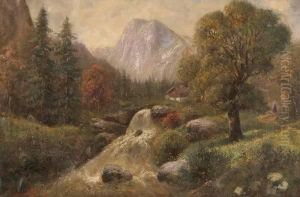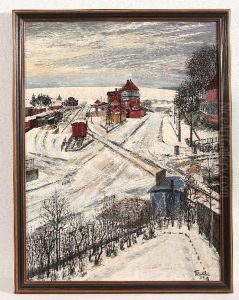G. Kolbe Paintings
Georg Kolbe was a prominent German sculptor born on April 15, 1877, in Waldheim, Saxony. He initially embarked on a career in painting by studying at the Dresden Academy of Fine Arts but soon shifted his focus towards sculpture after realizing his true passion. Kolbe's education in sculpture continued at the Munich Academy and later in Rome, where he was deeply influenced by the Renaissance and ancient sculpture. His early works were characterized by a naturalistic and detailed approach, which gradually evolved into a more simplified and expressive style.
Kolbe's sculptures, primarily in bronze, are noted for their sensuous and idealized representations of the human body, reflecting an interest in classical harmony and beauty. His work gained significant recognition in the early 20th century, particularly during the 1920s and 1930s, when he was considered one of Germany's leading sculptors. Kolbe's art was appreciated for its vitality and the emotional depth of its subjects, which ranged from allegorical figures to portraits and dancers.
During his career, Kolbe was involved in various important projects and exhibitions, including the 1936 Berlin Olympics, where his sculptures were prominently displayed. He also served as the president of the Prussian Academy of Arts but was later entangled with the Nazi regime, a controversial aspect of his life that has led to a nuanced assessment of his legacy. Despite this, Kolbe's contribution to modern sculpture and his influence on future generations of artists remain significant.
Georg Kolbe died on November 20, 1947, in Berlin. His home and studio in Berlin-Zehlendorf have been preserved as the Georg Kolbe Museum, which houses the largest collection of his works and serves as a testament to his artistic achievements. The museum not only celebrates his legacy but also provides insights into the evolution of early 20th-century sculpture.

